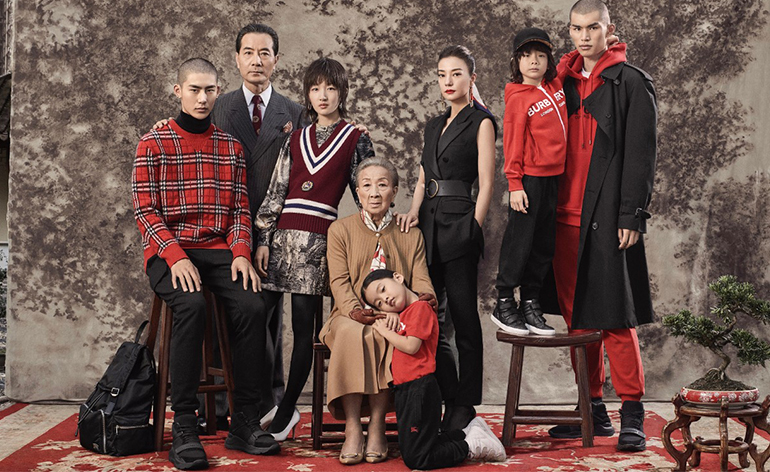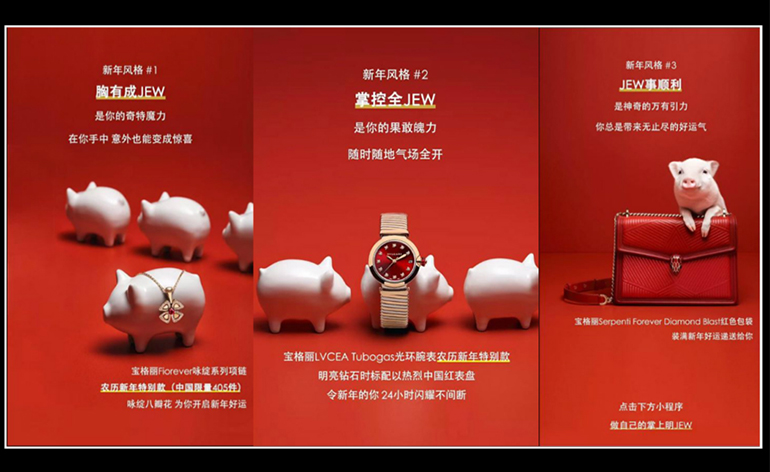
Campaigns
Cultural Messaging in China: A Chinese New Year Case Study
by
Lydianne Yap | February 20, 2019
Sending the right message is tricky business, as brands like Burberry and Bulgari discovered in China this Spring Festival. In a world rife with taboos and unintended connotations, what should brands be looking out for?
While Chinese across the globe celebrated the dawn of a new year last week, luxury labels were busy assessing the impact of their Chinese New Year campaigns in the world’s largest market for luxury goods: China. Kering’s recent 2018 earnings call revealed that contrary to industry fears of a slowdown in Chinese spending, demand for luxury items is still growing – making the Chinese New Year initiatives of brands all that more important.
But like all campaigns, messaging is of utmost importance – and that includes picking up on cultural nuances and communicating ideas in a way that appeals to the target audience. Unfortunately, this is easier said than done. Sometimes, there is a disconnect between the intended message and what is actually perceived by consumers. And mistakes in this department can prove to be costly for a brand. D&G;’s chopsticks debacle in China is a classic example of this, with e-commerce platforms in China such as Alibaba and JD.com pulling all D&G; products off their shelves when the media maelstrom hit.
Join Luxury Society to have more articles like this delivered directly to your inbox
This Chinese New Year, British label Burberry raised eyebrows in China when it released its campaign in January. While it may have featured a celebrity cast – newly appointed ambassadors, actresses Vicky Zhao and Zhou Dongyu, starred in the campaign – its overall execution was questionable. While the focus on family might have been on point, everything else seems to have missed the mark. Campaign images have been likened by Chinese netizens to everything from scenes out of a horror movie to a family feuding over its fortune. Due to public backlash, the brand eventually removed one of the most contentious images from its campaign (below).

Image: VCG
Then there are those campaigns that resonate remarkably well with the Chinese – but don’t sit as well with international audiences. Take Italian watchmaker and jeweller Bulgari’s Chinese New Year campaign for instance. Drawing inspiration from the lunar calendar’s Year of the Pig, it rolled out a WeChat campaign that punned on the word “Jew” – short for jewellery – and the similar-sounding word for pig in Chinese, 猪 (zhu). While Chinese netizens loved the wordplay and responded positively to the campaign, international audiences were unfortunately less impressed, remarking that associating the word Jew to pigs as being culturally insensitive to the Jewish faith.

Image: Campaign Asia
So how can brands strike a balance between the two? While the adage “you can’t please everyone” rings true, much can still be done by international brands about the optimisation of campaigns for a global audience.
Visual Identity
When it comes to the visual identity of a campaign, more attention needs to be paid to the cultural nuances of the market it is developed for. These recent Chinese New Year gaffes are further proof that brands should take more care in familiarising themselves with taboos across different cultural contexts.
While the Burberry campaign might have looked very chic through the lens of a Westerner (Ethan James Green, to be exact), several aspects of it proved problematic. The fact that everyone in the “family portrait” was unsmiling might have been slightly unsettling at best, but the liberal use of black in their outfits and the generally dull backdrop did not help matters. While it may seem inconsequential, small things like the lack of bright colours (red and gold are favoured during Chinese New Year), and the overall sombre mood of the campaign did not send the right message.
“Symbolism is an important part of messaging, and while certain symbols may seem innocuous to the casual observer, they can be potentially offensive to certain groups of people and international brands should take this into careful consideration – especially when crafting content for audiences whose culture they may be less familiar with,” says Pablo Mauron, partner and managing director China of DLG (Digital Luxury Group). “Even simple things like numbers – the rest of the world may not have a problem with all sorts of numerals, but the Chinese find the number four (四/si) unlucky, as the pronunciation of it is similar to the word “death” (死/si),” he continues.
All that said, Burberry’s Chinese New Year campaign was not a total loss, with some more forward-looking consumers applauding the brand’s fresh take on the Chinese holiday. “While the younger generation might be less superstitious, these beliefs and negative symbols should still be taken into consideration. Messaging should be carefully balanced to ensure that it offends no one. The list is not exhaustive, and onus is on the brands to be the gatekeepers of every message that goes out to the public,” adds Mauron.
Copy
While a picture may be worth a thousand words, that is not to say that the content that comes with a campaign is any less important. The style of writing, of course, forms a large part of that. With social media being the main channel of dissemination for digital campaigns today (and even more so in China), social-friendly content is a key focus.
Creating clever puns and word play may be a good way to get the message across in a social environment and drive recall. But great care should be taken into ensuring that the message sent out is one that is socially and politically correct – across all contexts. “Sometimes when a brand is too focused on the market the message is intended for, it tends to forget or overlook the impact of this very same message on its audience in other markets,” says Mauron.
Calls-to-Action
No campaign worth its salt would leave out the most important bit: Calls-to-Action (CTA). After all that investment into developing a campaign, reminders must be put in place for consumers to prompt them into action. These CTAs should be specific to the occasion to increase engagement. To do so, brands have to be wholly familiar with the cultural customs of the different markets.
“For instance, while people in the West often make resolutions at the dawn of a new year, the Chinese tend to make wishes instead. There is also a strong gifting culture during the Chinese New Year, which brands can leverage to their benefit,” says Mauron, noting that it is all about understanding the peculiarities of every market.
For all the brands that have made missteps in marketing to the Chinese audience, there have also been those who stood out for doing a remarkable job in capturing the spirit of what it means to be Chinese and presenting it in a relatable and sophisticated manner. Maker of fine writing instruments Montblanc did just that with its recent Kangxi campaign. Launched ahead of Chinese New Year, the campaign highlighted the manufacture’s new Montblanc High Artistry Limited Edition series, which featured China’s longest reigning ruler: Emperor Kang Xi (1654-1722). Available in six different iterations, the Montblanc High Artistry Homage to Emperor Kangxi Limited Edition depicts the different imperial symbols including the dragon, calligraphy and armour.

Tastefully reimagined, the digital campaign for this series of pens in China came in the form of a WeChat experience that took users on a journey to the forbidden city and placed them in an interview with the Emperor, who then quizzed the user on his or her knowledge about the symbols most associated with himself. Titled “你可懂联 康熙特聘” (“How well do you know the Emperor?”), each of these symbols corresponded with an exclusive writing instrument. Refined and elegant copy complemented the tone and theme of the entire experience, winning the brand many positive reactions over the course of the campaign’s run.
“Audiences have evolved, and brands need to adapt their marketing strategies accordingly. While audiences may have looked to emulate the West a lot more in the past, they are coming into their own and appreciate it when brands manage to capture the rich Chinese culture and heritage in their campaigns and products without it being viewed as trite or condescending,” says Mauron. “At the end of the day, it is about finding a balance that works for both the brand and the audience.”
*Luxury Society is the editorial division of DLG (Digital Luxury Group)

